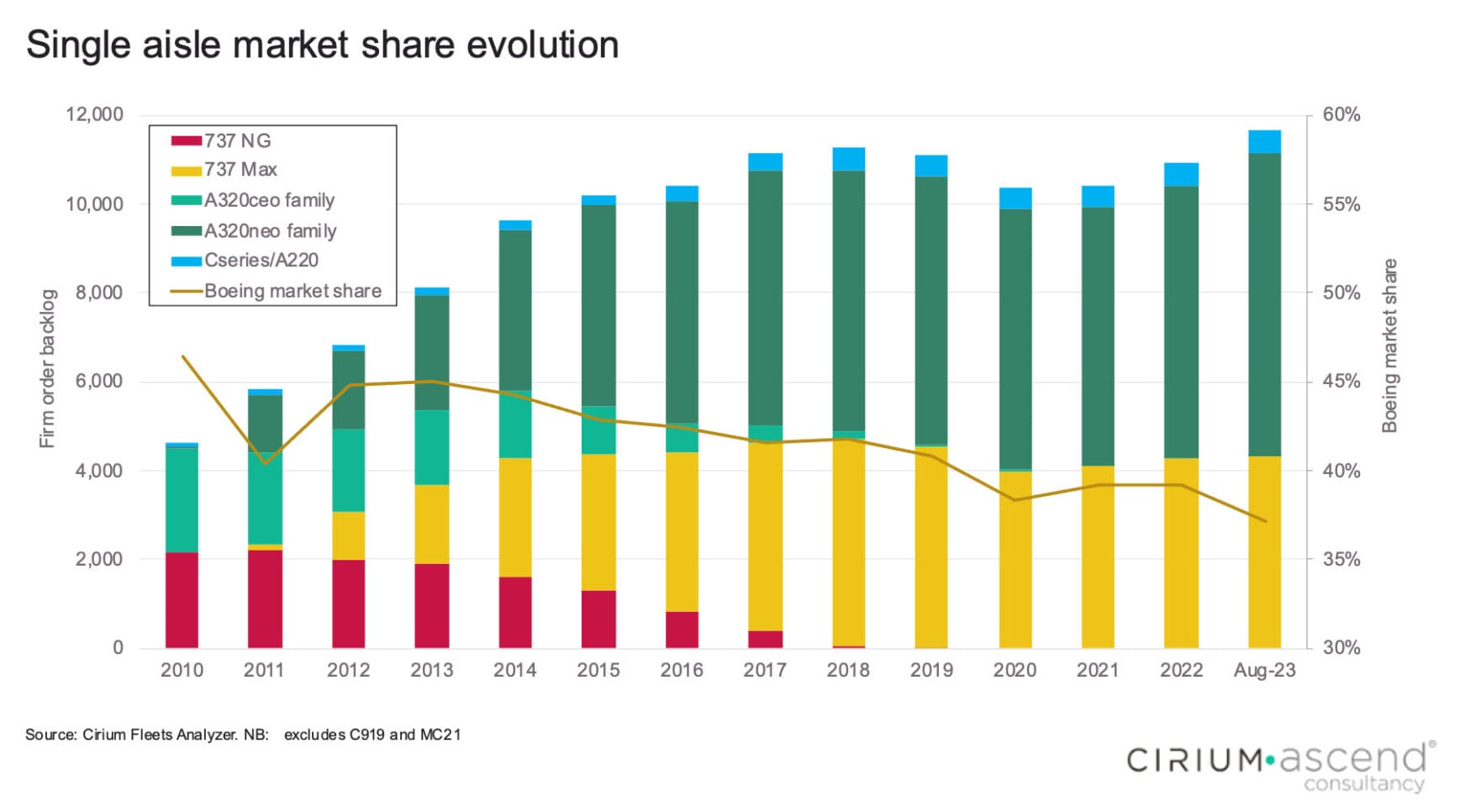READ ALL OF THE LATEST UPDATES FROM ASCEND CONSULTANCY EXPERTS WHO DELIVER POWERFUL ANALYSIS, COMMENTARIES AND PROJECTIONS TO AIRLINES, AIRCRAFT BUILD AND MAINTENANCE COMPANIES, FINANCIAL INSTITUTIONS, INSURERS AND NON-BANKING FINANCIERS. MEET THE ASCEND CONSULTANCY TEAM.

By Richard Evans, Senior consultant at Cirium Ascend Consultancy
Last week saw two significant milestones on two very different aircraft research programmes, both of which could ultimately lead to a radical new commercial aircraft platform to replace existing types in the single-aisle or small twin-aisle market.
Boeing issued a press release saying it flew its company-owned MD-90 aircraft (N931TB) from Victorville to Palmdale on 15 August, in order to commence modification work which will transform the plane into the Boeing/NASA X-66A Sustainable Flight Demonstrator. This is also referred to as the Transonic Truss-Based Wing (TTBW) programme.
The aircraft will eventually emerge with a new truss-braced very high aspect ratio wing, a cut-down fuselage ahead of the wing, and fuselage-mounted V2500s replaced by wing-mounted Pratt & Whitney PW1100G engines.
In total, Boeing has committed $725 million to the programme, with NASA providing an additional $425 million of funding. First flight is due in 2028.
Will this demonstrator lead to a 737 Max replacement eventually? It’s certainly possible. Boeing is saying it could provide a 30% saving in fuel burn.
However, despite the radical wing changes, most of the saving still depends on incorporating an all-new engine, potentially one based on the CFM RISE technology demonstrator. Given the timelines on all this, it seems unlikely any new aircraft could enter commercial service much before 2035 or 2036.

As a reminder, Boeing’s current market share of firm backlog in the single-aisle market has fallen to 37%, and Airbus now has a commanding 85% share in the large single-aisle sector (A321neo vs. 737 Max 9/10). The TTBW could help solve this problem in the long-term.
The second major announcement this week also involves an aircraft that has been touted as a future solution in the mid-market size category. This was the award of a $235 million Department of the Air Force (DAF) contract to ‘start-up’ company JetZero to help fund its Blended Wing Body (BWB) development. The Air Force press release stated “The effort aims to mature BWB technology and demonstrate its capabilities, giving the department and commercial industry more options for future air platforms.”
JetZero has previously promoted its design as a 767-sized aircraft with around 50% lower fuel burn pre seat.
However, it seems a more realistic ambition in the near-term is under the ‘Next Generation Air-refuelling System’ (NGAS) programme, which aims to deliver a stealthy tanker aircraft for the USAF by the 2030s.
It has partnered with Scaled Composites, a wholly-owned Northrop Grumman subsidiary. First flight is stated as 2027, which appears extremely optimistic! Nevertheless, this could potentially lead to a future commercial application in the second half of the 2030s. The full-scale demonstrator will utilise Pratt & Whitney PW1100G engines, which (assuming it is a twin-engined aircraft) implies either a smaller aircraft, or a 767-sized BWB really does have much lower weights/thrust.
The past two years have seen huge media attention around, and investment in, eVTOLs, hybrid-electric and hydrogen-powered aircraft projects, none of which are close to service entry yet. The money invested in the myriad of proposed types far outweighs the amount involved in the X-66A or BWB programmes, but all the alternatively-fuelled projects address just a tiny fraction of today’s commercial market.

Could new aircraft that utilize truss-braced wings or BWBs provide one more technology leap, using conventional propulsion technology? It is an enticing prospect, and one addresses the majority of aviation’s current carbon footprint, in contrast to advanced air mobility or island-hopping hydrogen aircraft.

SEE MORE ASCEND CONSULTANCY POSTS.
























































